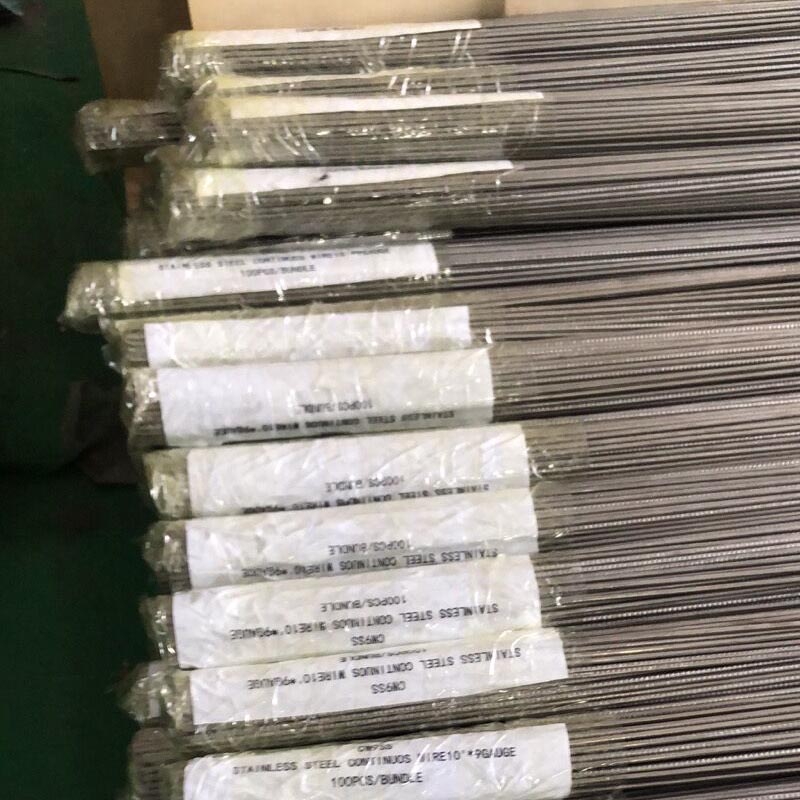
- Mobile Phone
- +8613931874955
- sales@cntcmetal.com
Mrz . 05, 2025 02:34
Back to list
concrete mesh wire for sale
Wire mesh is a crucial component in the construction industry, particularly when it comes to concrete applications. Its significance lies in its ability to provide structural reinforcement, enhance durability, and improve load distribution. With its precise formulation and installation, wire mesh ensures the longevity and resilience of concrete structures, making it an indispensable material for builders and architects alike.
Proper installation of wire mesh is also critical for optimizing its benefits. Experts recommend positioning the mesh in the upper third of the concrete slab, where tensile forces are predominantly exerted. This placement ensures that the wire mesh effectively counters these forces, reducing the incidence of surface cracks and extending the life of the concrete. Additionally, maintaining a consistent overlap between mesh sheets and securing them with appropriate ties or fasteners is crucial to achieving continuous coverage and strength throughout the concrete matrix. The application of wire mesh in concrete is not limited to new construction projects; it also plays a vital role in repair and rehabilitation tasks. In scenarios where existing concrete structures exhibit signs of wear, cracking, or damage, wire mesh can be used to reinforce the repaired areas, preventing further deterioration and restoring structural integrity. By integrating wire mesh into repair procedures, construction professionals can deliver sustainable, long-lasting solutions that minimize maintenance costs and prolong the service life of the structure. In the context of sustainable construction practices, wire mesh also contributes to reducing material waste and optimizing resource use. By enhancing the structural performance of concrete, wire mesh minimizes the need for excessive concrete volumes, thereby conserving raw materials and reducing the carbon footprint associated with concrete production. This eco-friendly aspect of wire mesh aligns with modern construction strategies aimed at promoting sustainable and environmentally responsible building methods. Ultimately, the utilization of wire mesh in concrete construction reflects a blend of practicality, expertise, and innovation. Professionals who leverage this technology not only ensure the safety and stability of their structures but also demonstrate a commitment to quality and sustainability. As construction demands evolve and the industry embraces new challenges, the role of wire mesh as a foundational element in concrete applications remains unwavering, continually offering reliable solutions that meet the highest standards of engineering excellence.


Proper installation of wire mesh is also critical for optimizing its benefits. Experts recommend positioning the mesh in the upper third of the concrete slab, where tensile forces are predominantly exerted. This placement ensures that the wire mesh effectively counters these forces, reducing the incidence of surface cracks and extending the life of the concrete. Additionally, maintaining a consistent overlap between mesh sheets and securing them with appropriate ties or fasteners is crucial to achieving continuous coverage and strength throughout the concrete matrix. The application of wire mesh in concrete is not limited to new construction projects; it also plays a vital role in repair and rehabilitation tasks. In scenarios where existing concrete structures exhibit signs of wear, cracking, or damage, wire mesh can be used to reinforce the repaired areas, preventing further deterioration and restoring structural integrity. By integrating wire mesh into repair procedures, construction professionals can deliver sustainable, long-lasting solutions that minimize maintenance costs and prolong the service life of the structure. In the context of sustainable construction practices, wire mesh also contributes to reducing material waste and optimizing resource use. By enhancing the structural performance of concrete, wire mesh minimizes the need for excessive concrete volumes, thereby conserving raw materials and reducing the carbon footprint associated with concrete production. This eco-friendly aspect of wire mesh aligns with modern construction strategies aimed at promoting sustainable and environmentally responsible building methods. Ultimately, the utilization of wire mesh in concrete construction reflects a blend of practicality, expertise, and innovation. Professionals who leverage this technology not only ensure the safety and stability of their structures but also demonstrate a commitment to quality and sustainability. As construction demands evolve and the industry embraces new challenges, the role of wire mesh as a foundational element in concrete applications remains unwavering, continually offering reliable solutions that meet the highest standards of engineering excellence.
share:
Latest news
-
Yard Sign Stakes: Reliable Guardians of Outdoor SignsNewsAug.04,2025
-
Wall Ties: Invisible Guardians of Building StabilityNewsAug.04,2025
-
Resilient Web: The Super Guardian Power of Concrete MeshNewsAug.04,2025
-
Masonry Accessories: A versatile assistant on building foundationsNewsAug.04,2025
-
Iron Binding Wire: the 'invisible reinforcement specialist' in the fields of architecture and industryNewsAug.04,2025
-
Dynamic Spring: The diverse functions and excellent performance of Wire Tension SpringNewsAug.04,2025
-
Your Source for Concrete Wall Ties and Masonry AccessoriesNewsJul.10,2025



















